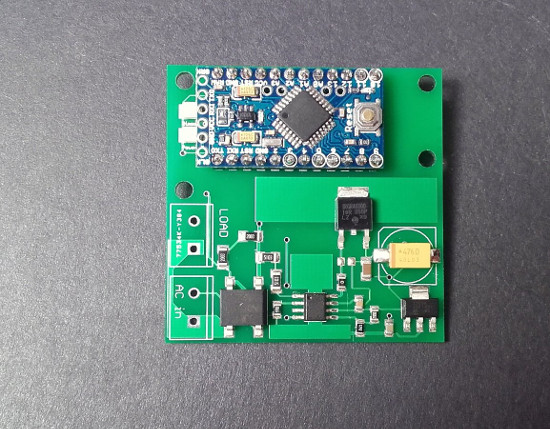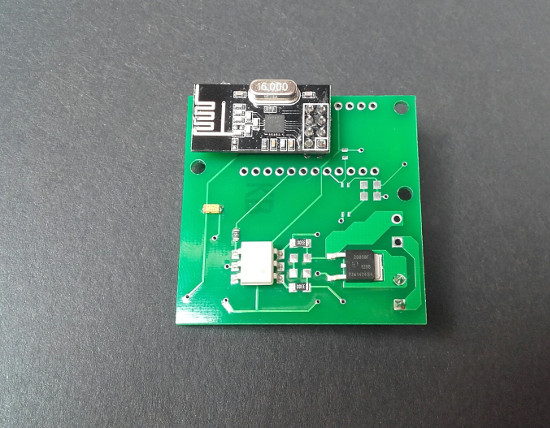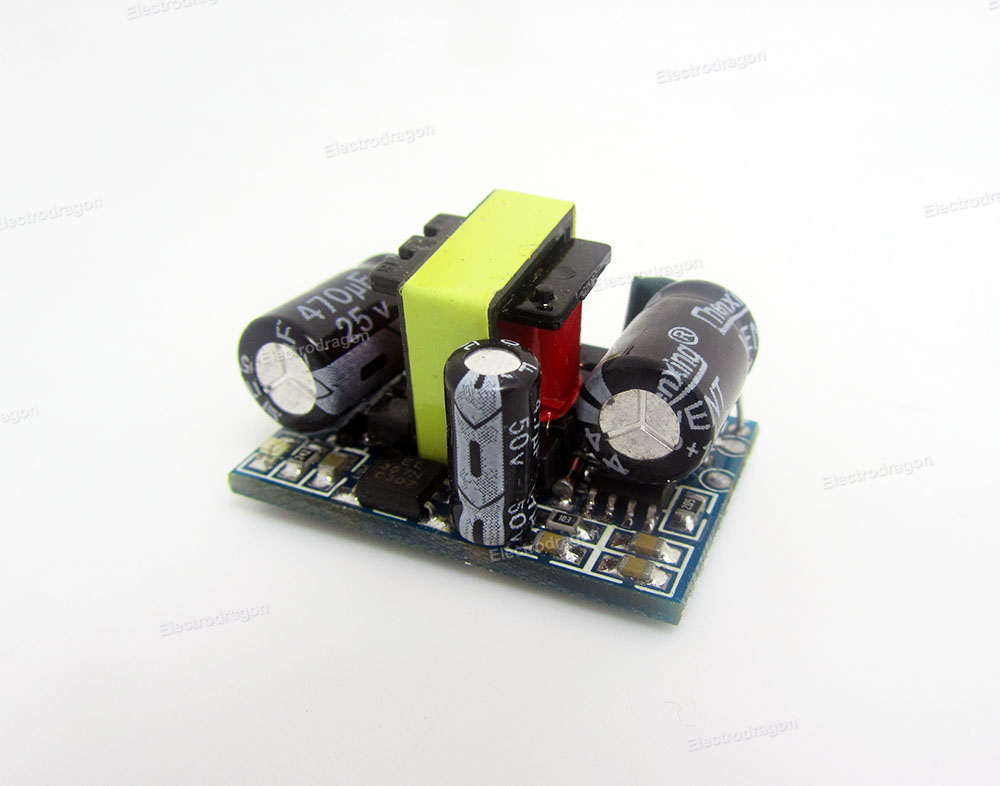Safe In-Wall AC to DC Transformers??
-
@TD22057 Yes, you can see in the teardown they have thought about the creepage in the optical feedback unit (cut a hole in PCB) between primary and secondary. I dont know why they so close, but 5mm is enough - maybe they forgot about solder/pads would take some space?
@alexsh1 If i understand Contamination levels right the difference between III and II is that in III occurs conductive contamination so if you seal it up this should get it down to II.
Then there is a difference between materials - and if compare material I and III its a big difference in creepage - does anyone knows what this means? What material is a normal PCB?
-
@TD22057 Yes, you can see in the teardown they have thought about the creepage in the optical feedback unit (cut a hole in PCB) between primary and secondary. I dont know why they so close, but 5mm is enough - maybe they forgot about solder/pads would take some space?
@alexsh1 If i understand Contamination levels right the difference between III and II is that in III occurs conductive contamination so if you seal it up this should get it down to II.
Then there is a difference between materials - and if compare material I and III its a big difference in creepage - does anyone knows what this means? What material is a normal PCB?
Maybe they put the pins closer on the AC side than on the DC, to make sure people would not put the unit the wrong way, which could be dangerous? But as you say, they should have done a better job, though.
-
@martinhjelmare - thats a great thought - must be so, but if you think safety they should do the other way around, ac side wide apart and dc closer.
-
@martinhjelmare - thats a great thought - must be so, but if you think safety they should do the other way around, ac side wide apart and dc closer.
Yeah, :smile: , they really screwed that up. Unfortunate, when the rest of the design, seems so good.
-
Some more info about Material Groups and CTI reagarding creepage. When i read PCI datasheets with FR-4 material from different pcb manufactures it looks like we are in the III group (worst offcourse).
PCB in better groups (and better CTI) can be found offcourse - just add money.
Also found a clearance and creepage calculator: http://www.creepage.com/ -
This one is not "safe", but it is an In-Wall AC to DC converter. Transformerless. With a 3A Solid state relay:


The converter output is 3.3V at 100mA and the solid state relay is a Triac.
-
This solution, if well build locks a lot safer than a standard phone charger. The overheat protection is something that I like a lot. Is ther any pcb that only haves this solution? I found one in the OpenHardware but it integrates the node, I would like some stand alone solution! I think that I will give KiCad a go and try to develop one!
-
So just to bring the attention back to the fuse situation since the last update on the original post was in December;
Am I correct in thinking that we're supporting the use of a fast blow fuse and optionally a 4.7uF Capacitor on the AC side of the transformer/converter?
My initial thoughts before being directed to this topic was to have the Capacitor on the AC side of the circuit along with a slow blow and thermal fuse, then on the DC side of the converter to have a fast blow fuse for the low power circuitry along with the filtering caps.
The reason why i thought this, i have zero experience in this department though, is that the slow blow fuse on the AC side would allow for the inrush spikes from the transformer and the capacitor charging and then the fast blow fuse would stop the dc components from being fried from sudden spikes of DC current. Again, i have no experience here and hence the reason i'm posting this. Do you think that maybe i'm being a little too over the top with trying to protect my DC components?
-
Hello all, I finished my version of this solution! I used a ATMEGA328, this will make it cheaper. https://www.openhardware.io/view/83
I need some help validating the layout, most important the 220v traces and the capacitors used in the layout!
Thank you all
-
Interesting circuit.
http://www.homemade-circuits.com/2012/03/how-to-make-simple-12-v-1-amp-switch.htmlDigchip circuit detail.
http://application-notes.digchip.com/005/5-10593.pdfThis circuit has VIPer22A it is similar with AP8012 of Hi-link.
NTC Resistor for Temperature Protection.
(With NTC, resistance Decreases with temperature to protect against inrush overcurrent conditions. Installed series in a circuit.)VIPer22A Datasheet:
OVERTEMPERATURE, OVERCURRENT AND OVERVOLTAGE PROTECTION WITH AUTORESTARTIt is easier to buy Hilink, but I found it has interesting things.
-
"Performance test and review of mains to 5V 0.6A Hi-Link HLK-PM01"
http://lygte-info.dk/review/Power Mains to 5V 0.6A Hi-Link HLK-PM01 UK.html -
Hello, I'm looking for 200mA slow blow fuses, I looked ebay and AliExpress, but I can't find it! Does any one haves a seller?
-
Hello, I'm looking for 200mA slow blow fuses, I looked ebay and AliExpress, but I can't find it! Does any one haves a seller?
@Soloam said:
Hello, I'm looking for 200mA slow blow fuses, I looked ebay and AliExpress, but I can't find it! Does any one haves a seller?
Just a quick search brings up a few options. I have linked you towards two of them;
http://www.amazon.com/Qty-200mA-Slow-Blow-T200ma-GDC200mA/dp/B004TN2ZGG
http://www.ebay.com/itm/5pcs-MJS-200-R-0653-0200-11-FUSE-0-2A-125V-200mA-SB-SLOW-BLOW-AXIAL-LEADS-5X15mm-/111902926482?hash=item1a0def2692:g:e2YAAOSwzgRWvdRe -
Hi @Samuel235 thank you, but the shipping cost from amazon to my country would be a lot! I was looking at Ebay and AliExpress, but I can find Fuzes 250v 3.6x10mm Slow Blow of 200mA!
The only one that I found where this http://www.ebay.com/itm/111433875797?_trksid=p2057872.m2749.l2649&var=410420838583&ssPageName=STRK%3AMEBIDX%3AIT&rmvSB=true! But the 200mA are out of stock!
I wanted 3.6x10mm because of the size of the board where I'm going to use them, 250V is my country AC voltage (Europe, Portugal), Slow Blow because I think it would work better, and 200mA because that is the HK max current.
-
After some searching I can't find the 200mA fuses on 3.6x10 mm size and with Axial Leads! I think I'll go with the 300mA type!
-
I'm just having a quick look through the specs of the HLK-PM01 and it has a stable current draw of 600mA with a burst draw of 1A. Would i be wrong in giving this a 1A slow blow fuse to protect it, or should it be smaller? I see most of people are going for a 300mA fuse here but i'm a little confused on why you would do that if the HLK-PM01 is safe to burst draw 1A?
-
I'm just having a quick look through the specs of the HLK-PM01 and it has a stable current draw of 600mA with a burst draw of 1A. Would i be wrong in giving this a 1A slow blow fuse to protect it, or should it be smaller? I see most of people are going for a 300mA fuse here but i'm a little confused on why you would do that if the HLK-PM01 is safe to burst draw 1A?
@Samuel235 I have a fast blow fuse 800mA and in terms of slow blow fuses,I think 300mA is spot on. Why are you looking at the hlk-pm01 specs? You should be looking at consumption current. Yes, hlk-pm01 can provide a stable 5v at 600mA, but is it relevant for our project when the consumption is probably below 200mA?
If you are looking at something more power hungry the values have to be altered accordingly.
-
@Samuel235 I have a fast blow fuse 800mA and in terms of slow blow fuses,I think 300mA is spot on. Why are you looking at the hlk-pm01 specs? You should be looking at consumption current. Yes, hlk-pm01 can provide a stable 5v at 600mA, but is it relevant for our project when the consumption is probably below 200mA?
If you are looking at something more power hungry the values have to be altered accordingly.
-
Hi all...
I've recently received 20 of these units (see picture below) and hooked all but two of them all up to 240v with a dummy load resister to test. The other two are driving MySensor nodes to make sure there are no unexplained resets etc. They are well made and are claimed to be a "Mature" and stable unit. So far, no smoke and the ones on nodes have not reset, so all looks well. They have temperature protection, overcurrent, overvoltage and short circuit protection.
I went for these rather than the HLK-PM01 because:
- Being an open PCB, i can easily attach a lead onto the low voltage AC side of the transformer for use by the EMon Energy Meter library in calculating the actual AC voltage in order to derive more accurate power usage.
- The other thing I like is they are not a 'potted blob' - while the blob is a lot safer with regard to errant fingers etc, I feel they must run a lot hotter, and heat not only causes components to die, I figure it could increase the fire risk?
And the final factor being that the price is a bit over one euro, making them the lowest cost AC power supply I've come across for nodes.
Product link: <click me>
FWIW: All the regular "Express" freight charges from China to Australia are about AUD$25 to $30, but this supplier offered an express courier for $7 (US$5) - When it sounds too good to be true. . . Well, the goods were collected from the supplier in China on Wed mid-day, and arrived at my door at noon on Friday. When you consider I live 100Km outside of the main city (Perth), which normally adds two additional days onto any delivery, this was utterly amazing!
Cheers,
Paul

-
Hi all...
I've recently received 20 of these units (see picture below) and hooked all but two of them all up to 240v with a dummy load resister to test. The other two are driving MySensor nodes to make sure there are no unexplained resets etc. They are well made and are claimed to be a "Mature" and stable unit. So far, no smoke and the ones on nodes have not reset, so all looks well. They have temperature protection, overcurrent, overvoltage and short circuit protection.
I went for these rather than the HLK-PM01 because:
- Being an open PCB, i can easily attach a lead onto the low voltage AC side of the transformer for use by the EMon Energy Meter library in calculating the actual AC voltage in order to derive more accurate power usage.
- The other thing I like is they are not a 'potted blob' - while the blob is a lot safer with regard to errant fingers etc, I feel they must run a lot hotter, and heat not only causes components to die, I figure it could increase the fire risk?
And the final factor being that the price is a bit over one euro, making them the lowest cost AC power supply I've come across for nodes.
Product link: <click me>
FWIW: All the regular "Express" freight charges from China to Australia are about AUD$25 to $30, but this supplier offered an express courier for $7 (US$5) - When it sounds too good to be true. . . Well, the goods were collected from the supplier in China on Wed mid-day, and arrived at my door at noon on Friday. When you consider I live 100Km outside of the main city (Perth), which normally adds two additional days onto any delivery, this was utterly amazing!
Cheers,
Paul

@AffordableTech, I was looking at these not too long ago. I wish i could get my hands on these in the UK for that sort of price! I too like the open PCB style rather than the HLK-PM01, just like yourself as all of my projects are inside of boxes or hidden away from human reach some way.
I'm tempted to purchase this just to have a little investigation on the quality of the item....
